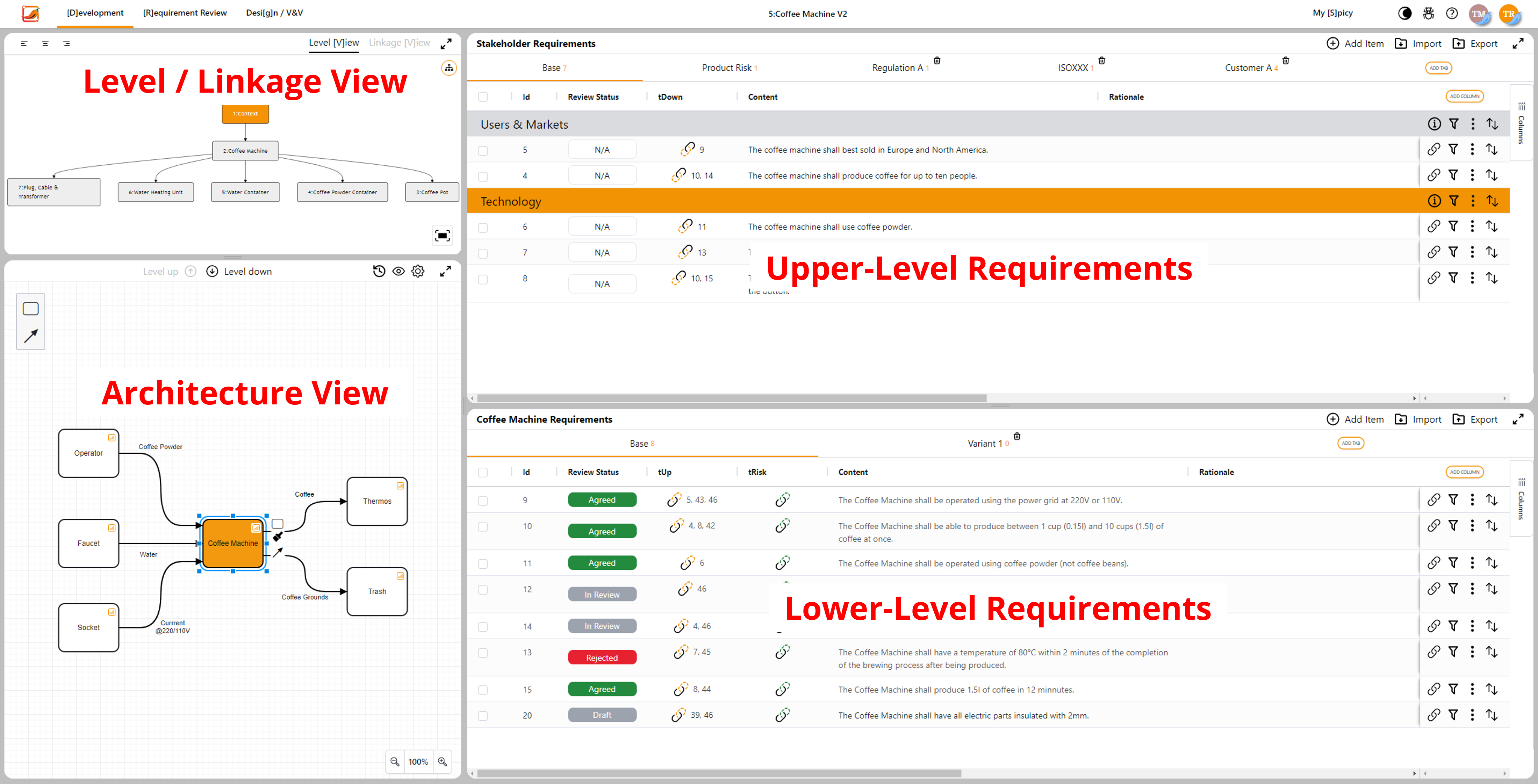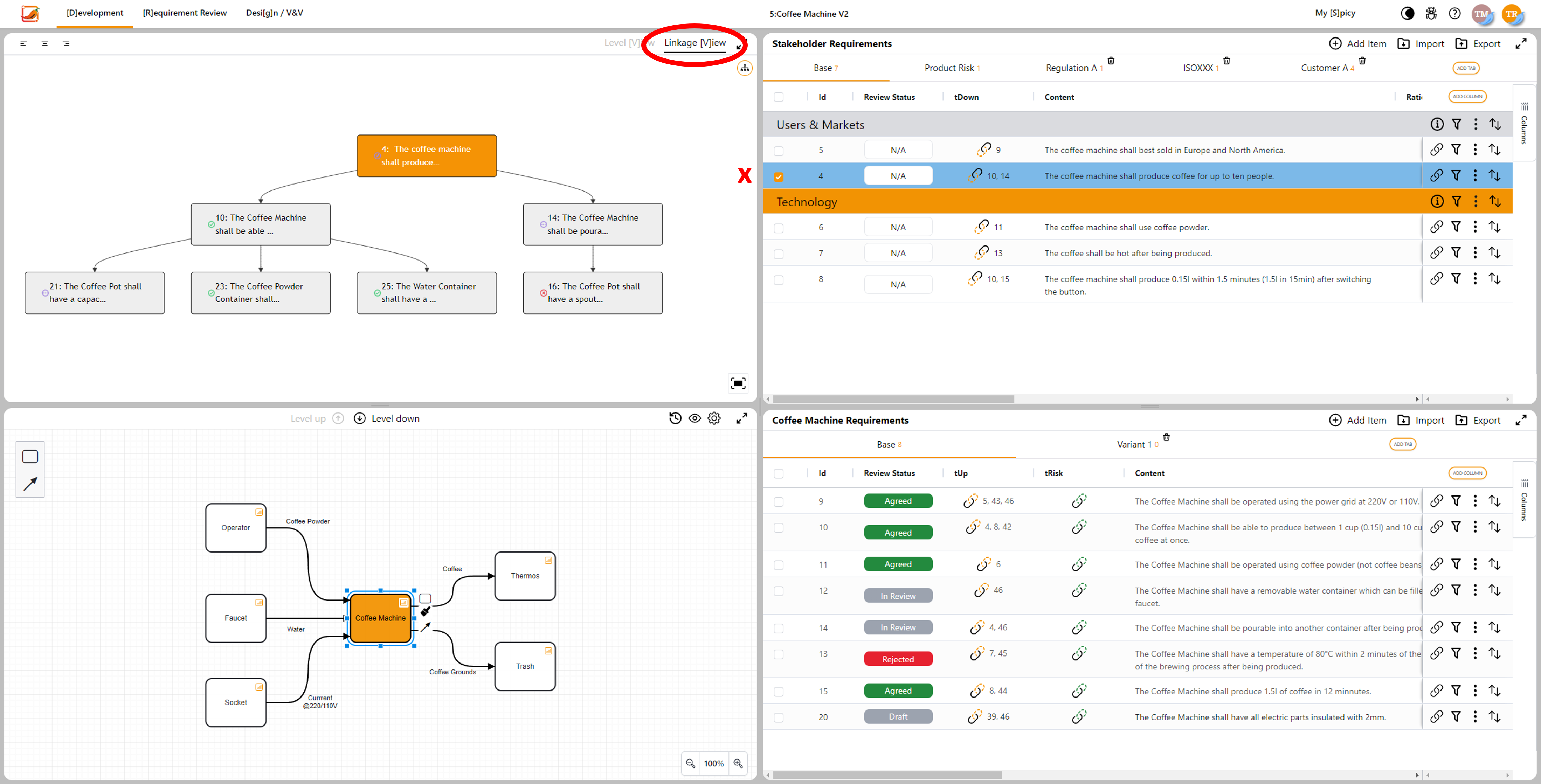Appearance
[D]evelopment
The development tab is split into four different windows.

Level / Linkage view
In the top left window, it can be switched between the level view and the linkage view.
The level view, which is shown in the picture above, shows all architecture elements that have a child architecture view. This serves to navigate between the different architecture views which can be done by clicking on the elements in the level view.
To utilize the linkage view, one has to switch from the level view to the linkage view and select a requirement to see its links. By clicking on one of the requirements in the linkage view it can be navigated to the architecture element containing the respective requirement. The review status of each requirement is also shown in the Linkage View.

Upper-Level Requirements
In the top right the upper-level requirements can be found (here: stakeholder requirements). The stakeholder requirements are usually the first thing to create and/or import in order to develop the context based on these requirements. New requirements can be created via the  button in the requirements view. An import is possible via the
button in the requirements view. An import is possible via the  button. Import is supported for .csv, .xml, and .reqif file formats. Requirements can also be exported via the
button. Import is supported for .csv, .xml, and .reqif file formats. Requirements can also be exported via the  button.
button.
To focus on editing requirements, the requirements view can be enlarged via the  button. To return to the previous view the
button. To return to the previous view the  button must be pressed.
button must be pressed.
Architecture View
In the bottom left the architecture view can be seen. It starts on the level of the context where, in this example case, the Coffee Machine is the system of interest. After clicking on one of the system elements the button  becomes active (Shortcut: “Alt + Click”). If clicking this button, the next lower level of the system becomes visible. If the user is on one of the lower levels of the system, the
becomes active (Shortcut: “Alt + Click”). If clicking this button, the next lower level of the system becomes visible. If the user is on one of the lower levels of the system, the  button becomes visible to jump to a higher level (Shortcut: “,”).
button becomes visible to jump to a higher level (Shortcut: “,”).
Architecture elements can easily be created via the box  button and connected via the arrow
button and connected via the arrow  button. It is also possible to change their color. Boxes and interfaces can be renamed by double clicking on their automatically created temporary name. The initial name of the system of interest is the same as the name of the project.
button. It is also possible to change their color. Boxes and interfaces can be renamed by double clicking on their automatically created temporary name. The initial name of the system of interest is the same as the name of the project.
Lower-Level Requirements
The window in the bottom right shows the requirements of the next lower level in the system. To see them, an architecture element in the architecture must be selected.
As the coffee machine is the system of interest it contains the system requirements. It is also possible to specify requirements for the other context elements. For example, if requirements to the customer or other suppliers, who are responsible for the surrounding systems, have to be defined.
Requirements for the system are specified in the same way as the stakeholder requirements via the  button in the bottom right requirements view. The view of the window can also be maximized
button in the bottom right requirements view. The view of the window can also be maximized  and reverted
and reverted  if a focused work on them is intended.
if a focused work on them is intended.